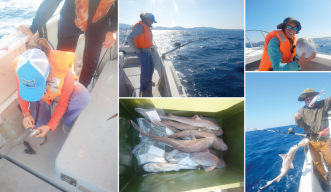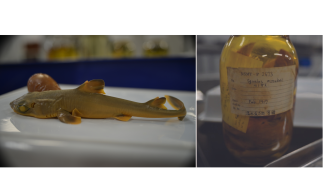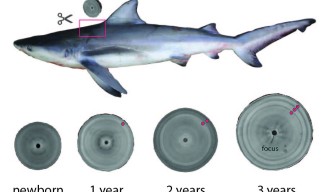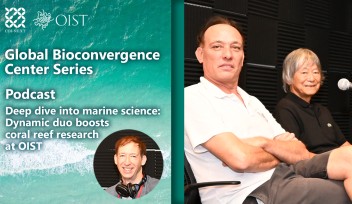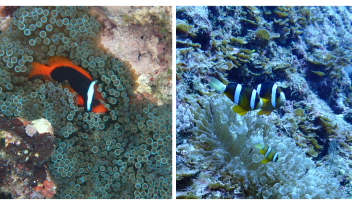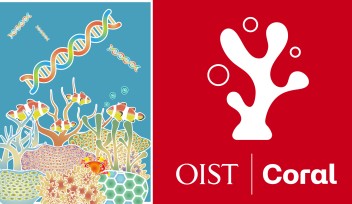OIST researcher helps put Okinawa’s critical shark habitats on the map

Sharks, serving as both apex predators and mesopredators, are vital to the health of marine ecosystems, directly regulating species populations and supporting biodiversity. The need to conserve these pivotal species grows as they face continued and increasing threats globally from overfishing, habitat degradation, and climate change.
The Important Shark and Ray Areas (ISRA) global project has marked a significant milestone in marine conservation by identifying key habitats in Asia, including Japan, with the latest e-Atlas update now live. This project, initiated in 2021 by the IUCN Species Survival Commission Shark Specialist Group, aims to address the urgent need for conservation of shark and ray species through evidence-based, biocentric approaches.
By identifying these critical habitats, the ISRA project provides a foundation for the development of species-specific conservation strategies for policymakers and relevant stakeholders in each country. Thanks to the efforts of marine biologist and shark researcher, Dr. Fabienne Ziadi-Künzli, from the Okinawa Institute of Science and Technology (OIST)’s Nonlinear and Non-equilibrium Physics Unit, new habitats have recently been selected in Okinawa.
Why is shark research important?
Okinawa is home to a variety of sharks, ranging from coastal to migratory species and those dwelling in the deep sea. Previous research has suggested that some populations may be genetically distinct from those in nearby regions, potentially indicating isolated populations within Okinawa.
“A critical aspect of understanding these sharks is knowing what they eat,” Dr. Ziadi-Künzli explained. Okinawa deep-sea sharks prefer small, soft-bodied animals like cephalopods (octopi, squids, cuttlefish), shrimp, and deep-water fish.

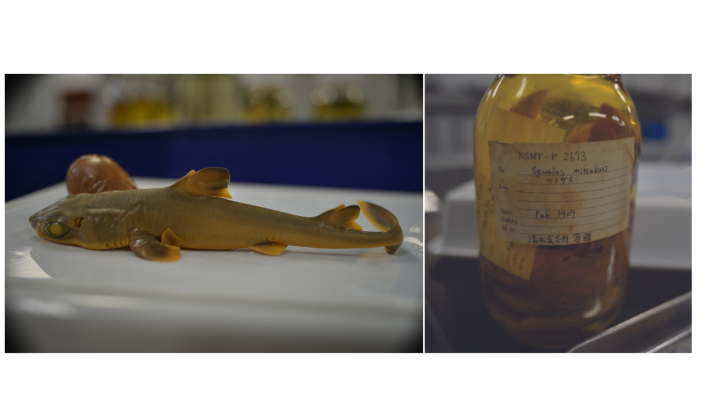
In contrast, larger coastal sharks like Tiger sharks exhibit a more varied and rather opportunistic diet. "They seem to have an appetite for birds," Dr. Ziadi-Künzli noted. Tiger sharks also consume larger reef fish and notably, other elasmobranchs like rays. One tiger shark was found to have ingested a large, poisonous pufferfish, as well as the remains of a racing pigeon from Taiwan (identified by the tag on its feet) and a candy wrapper from the Philippines, among other pieces of plastic debris. To better understand their ecological role and assess the impacts of plastic ingestion, Dr. Ziadi-Künzli is diligently analyzing the stomach contents of these sharks.
Significant ISRAs in Japan
There are now 12 ISRAs located in Japan and 7 new areas are located within Okinawa Prefecture. Dr. Ziadi-Künzli proposed five areas within the subtropical marine zones of Okinawa Prefecture. Four of them were approved by the ISRA specialist panel based on the presence of threatened species and reproductive criteria: Urauchi River in Iriomote Island, Taikyusone Seamount, Naha and Mukue River, and Nago Bay. The remaining 3 ISRAs were proposed by other scientists: Yonaguni Island, Yaeyama Islands, and Kuroshima Island. These proposed areas underwent rigorous criteria checks based on extensive research and local knowledge.
Two of these areas, Naha and Mukue River and Urauchi River in Iriomote Island, serve as nurseries for newborn Bull sharks. These nurseries are in the brackish waters of river estuaries and extend to coastal mangroves and river systems. Dr. Ziadi-Künzli has 3D-scanned and analyzed vertebrae samples from young Bull sharks on Iriomote and Okinawa Island at OIST. The data indicates that these areas host newborns and up to three-year-old juveniles, providing a refuge which likely protects them from other sharks. Currently, these are the only known nurseries for Bull sharks in the region and crucial for the long-term survival of this species in Okinawa.
The remaining ISRAs, including the Taikyusone Seamount south of Okinawa and Nago Bay, are vital for significant populations of deep-sea species like dogfish (family Squalidae). “We now have an important ‘shark area’ located just in front of our campus! This area is especially biodiverse for deep-sea sharks, which are globally among the least studied groups of sharks,” said Dr. Ziadi-Künzli. She actively engages in outreach efforts across Okinawa Prefecture, visiting schools and community events to raise awareness about the importance of sharks to the local ecosystem.
"By providing scientific data for the Okinawa region, OIST researchers have helped put Okinawa's critical shark habitats on the global map," OIST President and CEO Dr. Karin Markides stated. "This is especially valuable for enabling governments and policymakers to develop informed conservation strategies for these species, many of which may only be found here."
Moving forward
The recent designations of ISRAs in Japan represent a significant step forward in shark research, conservation of biological biodiversity, and fostering the acceptance of sharks among the local communities.
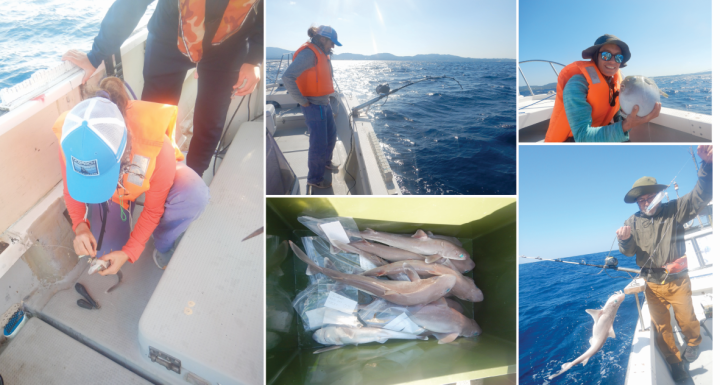
Although these areas are not currently under formal protection, initiatives by the Okinawan government will be essential in securing their future conservation. Collaborative efforts will help safeguard these critical habitats and integrate sustainable practices that benefit the marine environment and the local economies that depend on it.
Written by Fabienne Ziadi-Künzli and amended by Tomomi Okubo and Merle Naidoo
Specialties
Research Unit
For press enquiries:
Press Inquiry Form
